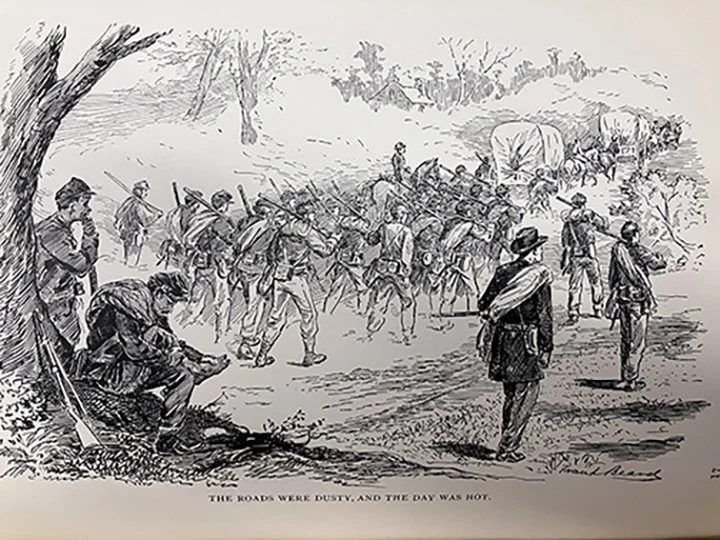March to Gettysburg
Marches could be as dangerous and deadly as actual battle. The summer heat took a heavy toll on the marching troops of both armies. John H. W. Stuckenberg, USA Chaplain, 145th Pennsylvania, wrote that, “It was such a march which men say they dread more than a battle.” Gettysburg surgeons described how soldiers suffered from heat stroke and exhaustion.
George T. Stevens, USA Surgeon 77 th New York, described men of the Sixth Corps falling from exhaustion and heat stroke
“with faces burning with a glow of crimson, and panting for breath.”
Thomas Fanning Wood, CSA Assistant Surgeon 3 rd North Carolina, described that on marches,
“The Assistant Surgeon’s place was behind the Regiment, now stopping to write a rear pass for some poor fellow overcome by fatigue, carry a canteen of water to one fellow by the wayside…”
Eventually their paths crossed at the small town of Gettysburg, Pennsylvania not far from the Maryland border. Alfred T. Hamilton, USA Assistant Surgeon 148th Pennsylvania, observed that,
“The march was severe on the men, many fell out to be picked up by ambulances, many died…the condition of our men from long marches, loss of sleep, lack of rations…will give the civilian an idea of how far spent the physical man was when we went into the fight and kept it up for three days.”
